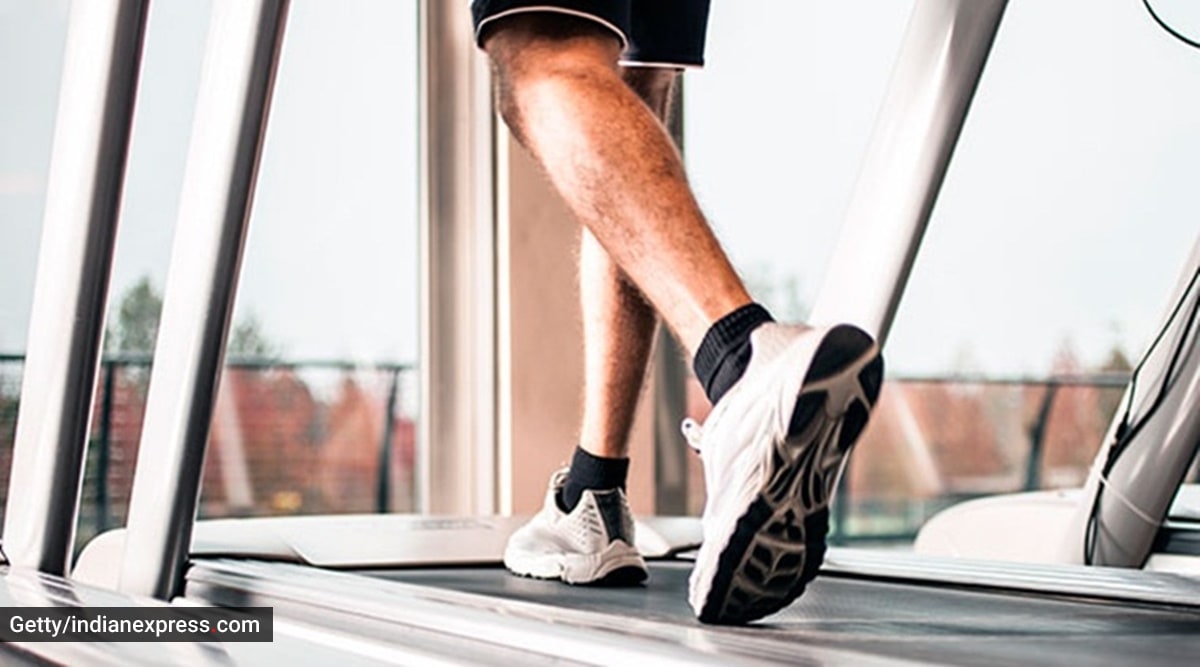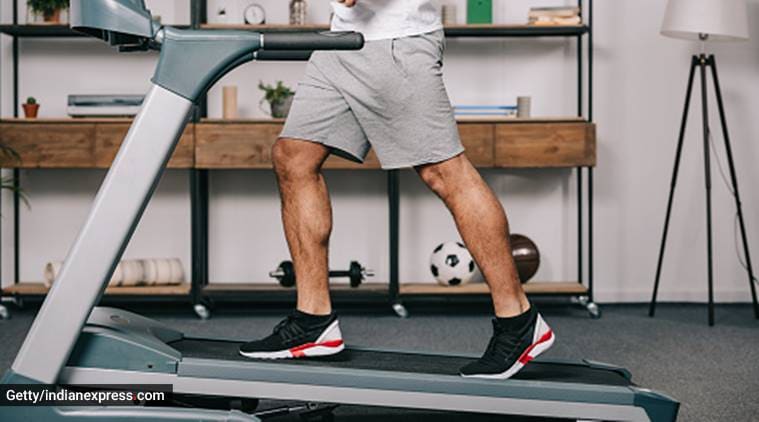Be mindful about how you use a treadmill. Experts decode it for us

Gym equipment help make exercise routines comparatively easy and achieve one’s fitness goals. But how each piece of equipment should be used is as important. One such equipment is the treadmill, a device used to reap the benefits of walking and running in a confined space. Below, we have experts from the medical and fitness fields telling us how to use a treadmill for optimum benefit.
As per Deepak Rawat, fitness expert, Cure.fit, the following points need to be considered.
Getting familiar with operating consoles
This is the most important prerequisite. Familiarity with operating consoles will take care of safety and ensure effective use of the machine, whether adjusting speed for a workout or stopping the treadmill in case of emergency.
Pre-structured programs
Every treadmill offers a set of pre-structured workouts on interval training, fat burn, cardio health, and cross-training. These workouts will allow you to focus on effort, as all adjustments on speed and terrain will happen automatically as part of the program you choose.
Keep a check on your heart rate
Monitoring the heart rate while working out on a treadmill helps to look after safety needs as most treadmills have the functionality to show your heart rate, either with help of a chest strap or a heart rate compatible watch.
A good running shoe
Undoubtedly, the best companion for a good treadmill workout. A good shoe helps when doing load-bearing exercises such as jogging and running.
Breathing
Avoid holding your breath during treadmill workouts and try to find a rhythm that sits well with your running intensity.
Activating glute muscle and mobilising ankle/hip joints
Learn a few important exercises for activating your glute and mobilising your ankle and hip joint before you start your treadmill workout.
Hydration
Drink water at regular intervals to maximise performance and to avoid any chances of post-exercise dehydration.
Consult an exercise professional
For a tailored program as per your goals and current health condition.
So, what are the dos and don’t while using one?
Dr Vivek Chaturvedi, senior consultant, Cardiology and Director Cardiac Electrophysiology and Pacing, Narayana Hospital said that people who have a heart condition, or are at high risk for it (multiple risk factors like diabetes, high blood pressure, smoking) or have any other serious non- heart related illness, should consult a physician before starting treadmill regimen.
“Same advice also holds true for individuals in late 30s and beyond who have been sedentary all their life but are now contemplating an active lifestyle, which may include working out on a treadmill,” he said.
Dr Rakesh Chugh, senior consultant and incharge, CTVS, Sri Balaji Action Medical Institute agreed and pointed out that if you are a cardiac patient, it may not be advisable exercise hard as treadmill workouts tend to increase the pulse rate and heart beat.
Dr Chaturvedi listed the following Dos
Speed up slowly
Slowly increase your speed with daily practice. Don’t try to cover long distances in one go.
Get your BP, sugar checked
Since running may increase your pulse rate or heartbeat, get your BP, sugar, cholesterol etc. checked before using a treadmill or starting any fitness routine. It may sound too much but still, it is wise as increased pulse rate, heaviness in breathing can aggravate such conditions.
Get proper diet
Keep the nutrition value high, as along with proper exercise, nutrition intake is also needed to ensure overall well-being.
Wear comfortable shoes
Accidental falls are not new with treadmill, hence ensure safety. Wear comfortable shoes in order to avoid any severe injury.
Ensure sound sleep and stress-free routine
After running and sweating, your body needs complete rest. Take a sound sleep. Also while using the treadmill if you feel heartburn or acidity-like issues, then immediately consult a doctor.

Dr Chugh listed the following don’ts
*Avoid running if you are sick, have just had a meal or have been empty stomach for long. Similarly, avoid treadmill if you are dehydrated.
*It’s a good idea to gradually build up the intensity of treadmill exercise rather than going out full throttle from the start. This holds true even if you feel fit for harder exertion. The transition to higher levels should happen over weeks and not days.
“These precautions ensure that the body is not exposed to sudden unexpected stress which is a major cause of collapse while exercising,” he said.
It is important to remember that the risk of heart disease and sudden development of heart attack is a complex issue, said experts. “Besides the well-known risk factors, there are many other threats including stress, hereditary factors and inflammation which are not very easy to target. So, following a healthy lifestyle doesn’t make one immune to heart disease. However, healthier and fitter people develop milder heart attacks and dramatically decrease their risk of sudden death which is a common and unfortunate outcome of acute heart attack. Hence, it’s always a good idea to adopt s heart-healthy lifestyle. This also cuts down the risk of several other ailments including cancer,” explained Dr Chugh.
For more lifestyle news, follow us: Twitter: lifestyle_ie | Facebook: IE Lifestyle | Instagram: ie_lifestyle
Source: Read Full Article
